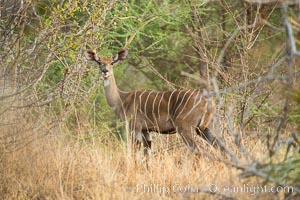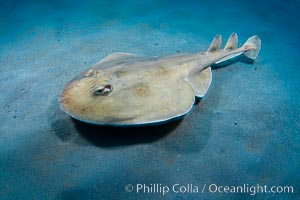
Lesser electric ray, Sea of Cortez, Baja California, Mexico.
Species: Lesser electric ray, Narcine entemedor
Location: Sea of Cortez, Baja California, Mexico
Image ID: 27539
Species: Lesser electric ray, Narcine entemedor
Location: Sea of Cortez, Baja California, Mexico
Image ID: 27539
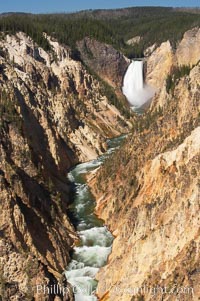
The Lower Falls of the Yellowstone River drops 308 feet at the head of the Grand Canyon of the Yellowstone. A long exposure blurs the fast-flowing water. The canyon is approximately 10,000 years old, 20 miles long, 1000 ft deep, and 2500 ft wide. Its yellow, orange and red-colored walls are due to oxidation of the various iron compounds in the soil, and to a lesser degree, sulfur content.
Location: Grand Canyon of the Yellowstone, Yellowstone National Park, Wyoming
Image ID: 13338
Location: Grand Canyon of the Yellowstone, Yellowstone National Park, Wyoming
Image ID: 13338
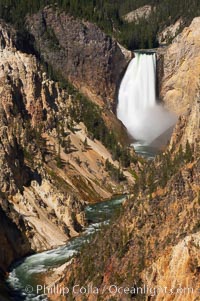
The Lower Falls of the Yellowstone River drops 308 feet at the head of the Grand Canyon of the Yellowstone. A long exposure blurs the fast-flowing water. The canyon is approximately 10,000 years old, 20 miles long, 1000 ft deep, and 2500 ft wide. Its yellow, orange and red-colored walls are due to oxidation of the various iron compounds in the soil, and to a lesser degree, sulfur content.
Location: Grand Canyon of the Yellowstone, Yellowstone National Park, Wyoming
Image ID: 13339
Location: Grand Canyon of the Yellowstone, Yellowstone National Park, Wyoming
Image ID: 13339
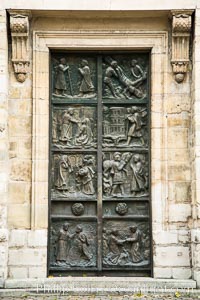
Eglise Saint-Pierre de Montmartre. The Church of Saint Peter of Montmartre is the lesser known of the two main churches on Montmartre in Paris, the other being the 19th-century Sacre-Coeur Basilica. Historically, however, it has the greater claim to fame, since, according to the earliest biography of Saint Ignatius Loyola, the church is the location at which the vows were taken that led to the founding of the Society of Jesus.
Location: Eglise Saint-Pierre de Montmartre, Paris, France
Image ID: 28157
Location: Eglise Saint-Pierre de Montmartre, Paris, France
Image ID: 28157
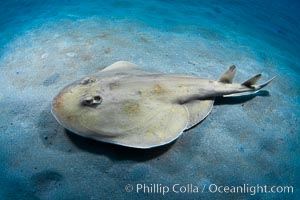
Lesser electric ray, Sea of Cortez, Baja California, Mexico.
Species: Lesser electric ray, Narcine entemedor
Location: Sea of Cortez, Baja California, Mexico
Image ID: 27548
Species: Lesser electric ray, Narcine entemedor
Location: Sea of Cortez, Baja California, Mexico
Image ID: 27548
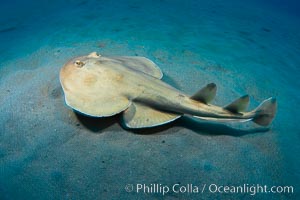
Lesser electric ray, Sea of Cortez, Baja California, Mexico.
Species: Lesser electric ray, Narcine entemedor
Location: Sea of Cortez, Baja California, Mexico
Image ID: 27549
Species: Lesser electric ray, Narcine entemedor
Location: Sea of Cortez, Baja California, Mexico
Image ID: 27549
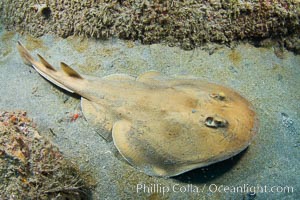
Lesser electric ray, Sea of Cortez, Baja California, Mexico.
Species: Lesser electric ray, Narcine entemedor
Location: Sea of Cortez, Baja California, Mexico
Image ID: 27550
Species: Lesser electric ray, Narcine entemedor
Location: Sea of Cortez, Baja California, Mexico
Image ID: 27550
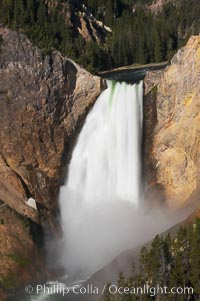
Lower Falls of the Yellowstone River. At 308 feet, the Lower Falls of the Yellowstone River is the tallest fall in the park. This view is from Lookout Point on the North side of the Grand Canyon of the Yellowstone. The canyon is approximately 10,000 years old, 20 miles long, 1000 ft deep, and 2500 ft wide. Its yellow, orange and red-colored walls are due to oxidation of the various iron compounds in the soil, and to a lesser degree, sulfur content.
Location: Grand Canyon of the Yellowstone, Yellowstone National Park, Wyoming
Image ID: 13321
Location: Grand Canyon of the Yellowstone, Yellowstone National Park, Wyoming
Image ID: 13321
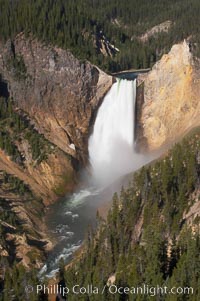
Lower Falls of the Yellowstone River. At 308 feet, the Lower Falls of the Yellowstone River is the tallest fall in the park. This view is from Lookout Point on the North side of the Grand Canyon of the Yellowstone. The canyon is approximately 10,000 years old, 20 miles long, 1000 ft deep, and 2500 ft wide. Its yellow, orange and red-colored walls are due to oxidation of the various iron compounds in the soil, and to a lesser degree, sulfur content.
Location: Grand Canyon of the Yellowstone, Yellowstone National Park, Wyoming
Image ID: 13322
Location: Grand Canyon of the Yellowstone, Yellowstone National Park, Wyoming
Image ID: 13322
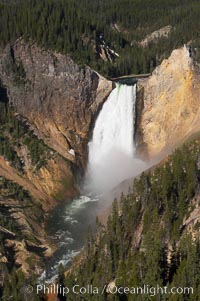
Lower Falls of the Yellowstone River. At 308 feet, the Lower Falls of the Yellowstone River is the tallest fall in the park. This view is from Lookout Point on the North side of the Grand Canyon of the Yellowstone. The canyon is approximately 10,000 years old, 20 miles long, 1000 ft deep, and 2500 ft wide. Its yellow, orange and red-colored walls are due to oxidation of the various iron compounds in the soil, and to a lesser degree, sulfur content.
Location: Grand Canyon of the Yellowstone, Yellowstone National Park, Wyoming
Image ID: 13325
Location: Grand Canyon of the Yellowstone, Yellowstone National Park, Wyoming
Image ID: 13325
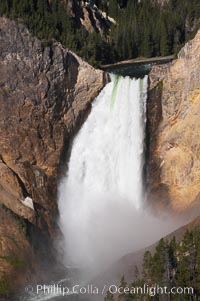
Lower Falls of the Yellowstone River. At 308 feet, the Lower Falls of the Yellowstone River is the tallest fall in the park. This view is from Lookout Point on the North side of the Grand Canyon of the Yellowstone. The canyon is approximately 10,000 years old, 20 miles long, 1000 ft deep, and 2500 ft wide. Its yellow, orange and red-colored walls are due to oxidation of the various iron compounds in the soil, and to a lesser degree, sulfur content.
Location: Grand Canyon of the Yellowstone, Yellowstone National Park, Wyoming
Image ID: 13326
Location: Grand Canyon of the Yellowstone, Yellowstone National Park, Wyoming
Image ID: 13326
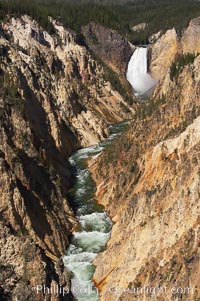
The Lower Falls of the Yellowstone River drops 308 feet at the head of the Grand Canyon of the Yellowstone. The canyon is approximately 10,000 years old, 20 miles long, 1000 ft deep, and 2500 ft wide. Its yellow, orange and red-colored walls are due to oxidation of the various iron compounds in the soil, and to a lesser degree, sulfur content.
Location: Grand Canyon of the Yellowstone, Yellowstone National Park, Wyoming
Image ID: 13340
Location: Grand Canyon of the Yellowstone, Yellowstone National Park, Wyoming
Image ID: 13340
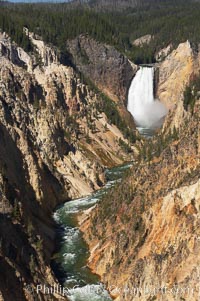
The Lower Falls of the Yellowstone River drops 308 feet at the head of the Grand Canyon of the Yellowstone. The canyon is approximately 10,000 years old, 20 miles long, 1000 ft deep, and 2500 ft wide. Its yellow, orange and red-colored walls are due to oxidation of the various iron compounds in the soil, and to a lesser degree, sulfur content.
Location: Grand Canyon of the Yellowstone, Yellowstone National Park, Wyoming
Image ID: 13341
Location: Grand Canyon of the Yellowstone, Yellowstone National Park, Wyoming
Image ID: 13341
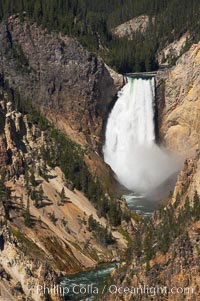
The Lower Falls of the Yellowstone River drops 308 feet at the head of the Grand Canyon of the Yellowstone. The canyon is approximately 10,000 years old, 20 miles long, 1000 ft deep, and 2500 ft wide. Its yellow, orange and red-colored walls are due to oxidation of the various iron compounds in the soil, and to a lesser degree, sulfur content.
Location: Grand Canyon of the Yellowstone, Yellowstone National Park, Wyoming
Image ID: 13342
Location: Grand Canyon of the Yellowstone, Yellowstone National Park, Wyoming
Image ID: 13342
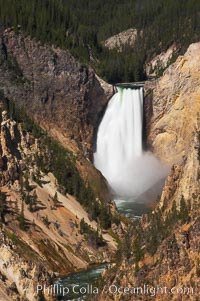
The Lower Falls of the Yellowstone River drops 308 feet at the head of the Grand Canyon of the Yellowstone. A long exposure blurs the fast-flowing water. The canyon is approximately 10,000 years old, 20 miles long, 1000 ft deep, and 2500 ft wide. Its yellow, orange and red-colored walls are due to oxidation of the various iron compounds in the soil, and to a lesser degree, sulfur content.
Location: Grand Canyon of the Yellowstone, Yellowstone National Park, Wyoming
Image ID: 13343
Location: Grand Canyon of the Yellowstone, Yellowstone National Park, Wyoming
Image ID: 13343
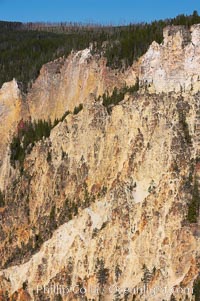
The sheer walls of the Grand Canyon of the Yellowstone take on a variety of yellow, red and orange hues due to iron oxidation in the soil and, to a lesser degree, sulfur content.
Location: Grand Canyon of the Yellowstone, Yellowstone National Park, Wyoming
Image ID: 13344
Location: Grand Canyon of the Yellowstone, Yellowstone National Park, Wyoming
Image ID: 13344
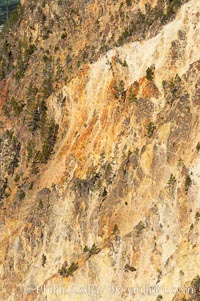
The sheer walls of the Grand Canyon of the Yellowstone take on a variety of yellow, red and orange hues due to iron oxidation in the soil and, to a lesser degree, sulfur content.
Location: Grand Canyon of the Yellowstone, Yellowstone National Park, Wyoming
Image ID: 13345
Location: Grand Canyon of the Yellowstone, Yellowstone National Park, Wyoming
Image ID: 13345
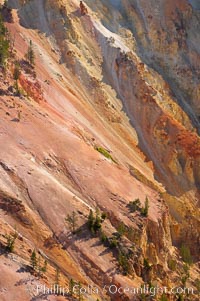
The sheer walls of the Grand Canyon of the Yellowstone take on a variety of yellow, red and orange hues due to iron oxidation in the soil and, to a lesser degree, sulfur content.
Location: Grand Canyon of the Yellowstone, Yellowstone National Park, Wyoming
Image ID: 13346
Location: Grand Canyon of the Yellowstone, Yellowstone National Park, Wyoming
Image ID: 13346
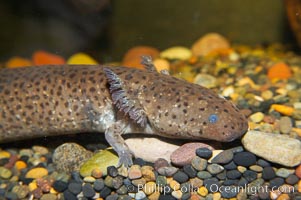
Lesser siren, a large amphibian with external gills, can also obtain oxygen by gulping air into its lungs, an adaptation that allows it to survive periods of drought. It is native to the southeastern United States.
Species: Lesser siren, Siren intermedia
Image ID: 13980
Species: Lesser siren, Siren intermedia
Image ID: 13980
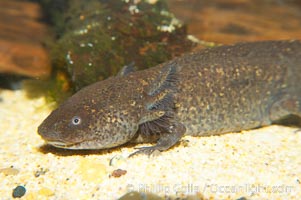
Lesser siren, a large amphibian with external gills, can also obtain oxygen by gulping air into its lungs, an adaptation that allows it to survive periods of drought. It is native to the southeastern United States.
Species: Lesser siren, Siren intermedia
Image ID: 13981
Species: Lesser siren, Siren intermedia
Image ID: 13981
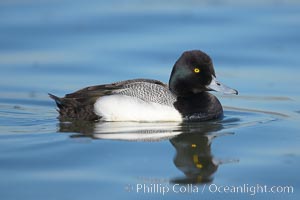
Lesser scaup, male, breeding plumage.
Species: Lesser scaup, Aythya affinis
Location: Mission Bay, San Diego, California
Image ID: 18418
Species: Lesser scaup, Aythya affinis
Location: Mission Bay, San Diego, California
Image ID: 18418
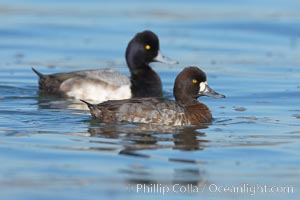
Lesser scaups, female (f) and male (r), breeding plumage.
Species: Lesser scaup, Aythya affinis
Location: Mission Bay, San Diego, California
Image ID: 18419
Species: Lesser scaup, Aythya affinis
Location: Mission Bay, San Diego, California
Image ID: 18419
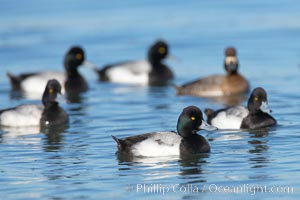
Lesser scaups, single female and five males, breeding plumage.
Species: Lesser scaup, Aythya affinis
Location: Mission Bay, San Diego, California
Image ID: 18420
Species: Lesser scaup, Aythya affinis
Location: Mission Bay, San Diego, California
Image ID: 18420
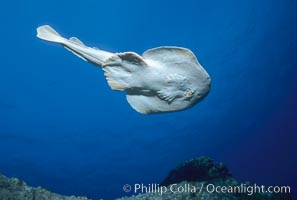
Lesser electric ray.
Species: Lesser electric ray, Narcine entemedor
Location: Socorro Island (Islas Revillagigedos), Baja California, Mexico
Image ID: 03287
Species: Lesser electric ray, Narcine entemedor
Location: Socorro Island (Islas Revillagigedos), Baja California, Mexico
Image ID: 03287
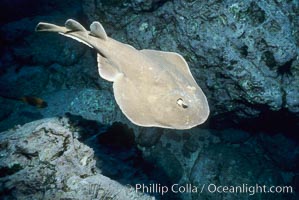
Lesser electric ray.
Species: Lesser electric ray, Narcine entemedor
Location: Socorro Island (Islas Revillagigedos), Baja California, Mexico
Image ID: 03289
Species: Lesser electric ray, Narcine entemedor
Location: Socorro Island (Islas Revillagigedos), Baja California, Mexico
Image ID: 03289
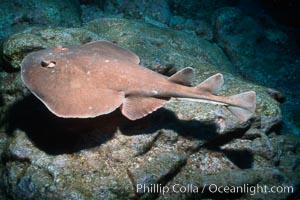
Lesser electric ray.
Species: Lesser electric ray, Narcine entemedor
Location: Socorro Island (Islas Revillagigedos), Baja California, Mexico
Image ID: 03286
Species: Lesser electric ray, Narcine entemedor
Location: Socorro Island (Islas Revillagigedos), Baja California, Mexico
Image ID: 03286
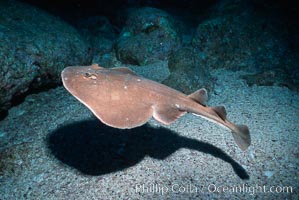
Lesser electric ray.
Species: Lesser electric ray, Narcine entemedor
Location: Socorro Island (Islas Revillagigedos), Baja California, Mexico
Image ID: 03290
Species: Lesser electric ray, Narcine entemedor
Location: Socorro Island (Islas Revillagigedos), Baja California, Mexico
Image ID: 03290
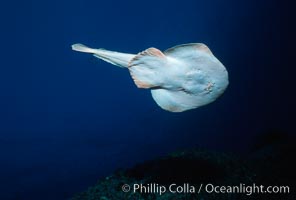
Lesser electric ray.
Species: Lesser electric ray, Narcine entemedor
Location: Socorro Island (Islas Revillagigedos), Baja California, Mexico
Image ID: 04994
Species: Lesser electric ray, Narcine entemedor
Location: Socorro Island (Islas Revillagigedos), Baja California, Mexico
Image ID: 04994
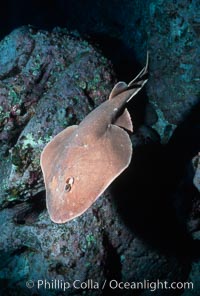
Lesser electric ray.
Species: Lesser electric ray, Narcine entemedor
Location: Socorro Island (Islas Revillagigedos), Baja California, Mexico
Image ID: 04996
Species: Lesser electric ray, Narcine entemedor
Location: Socorro Island (Islas Revillagigedos), Baja California, Mexico
Image ID: 04996
